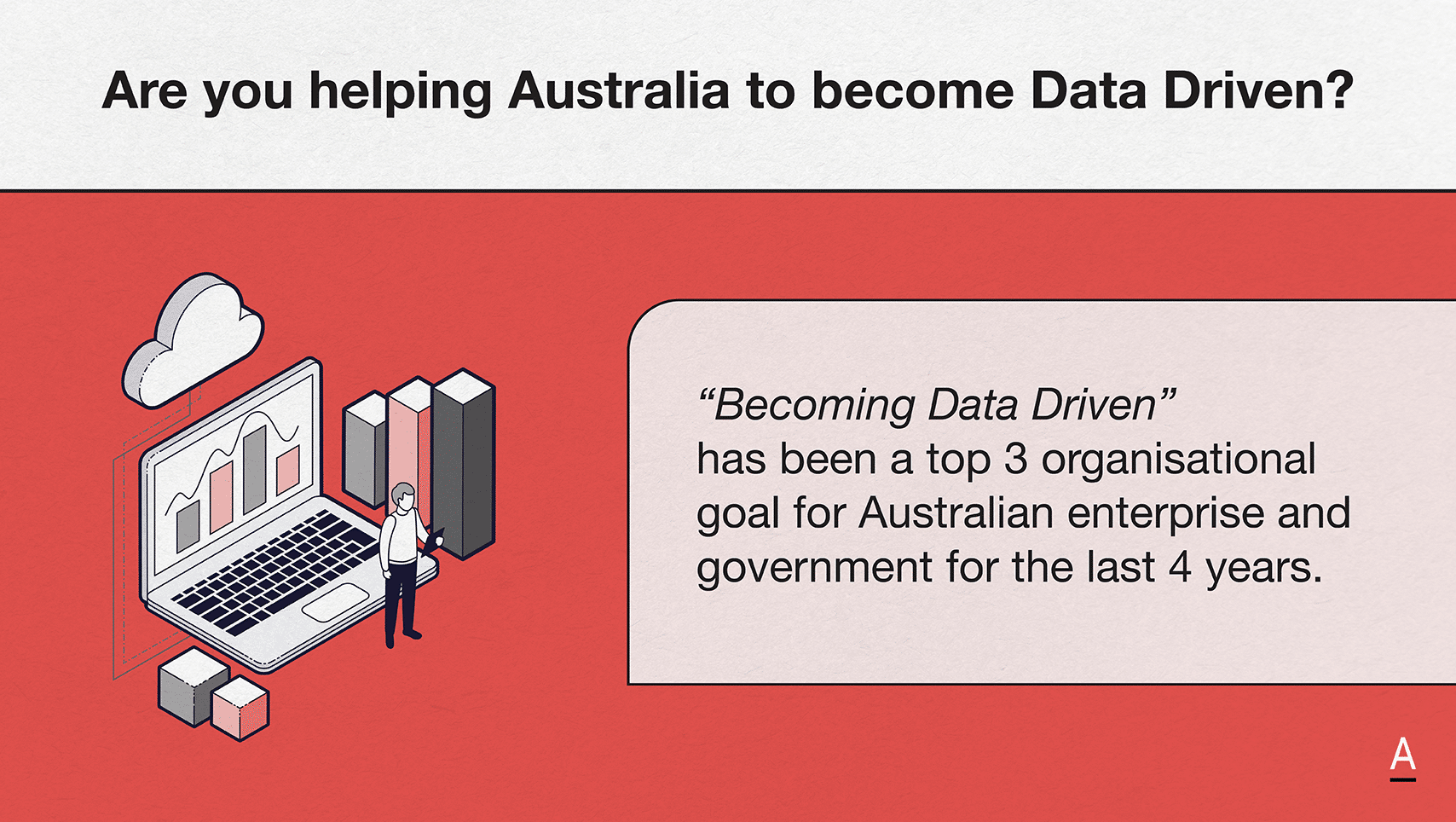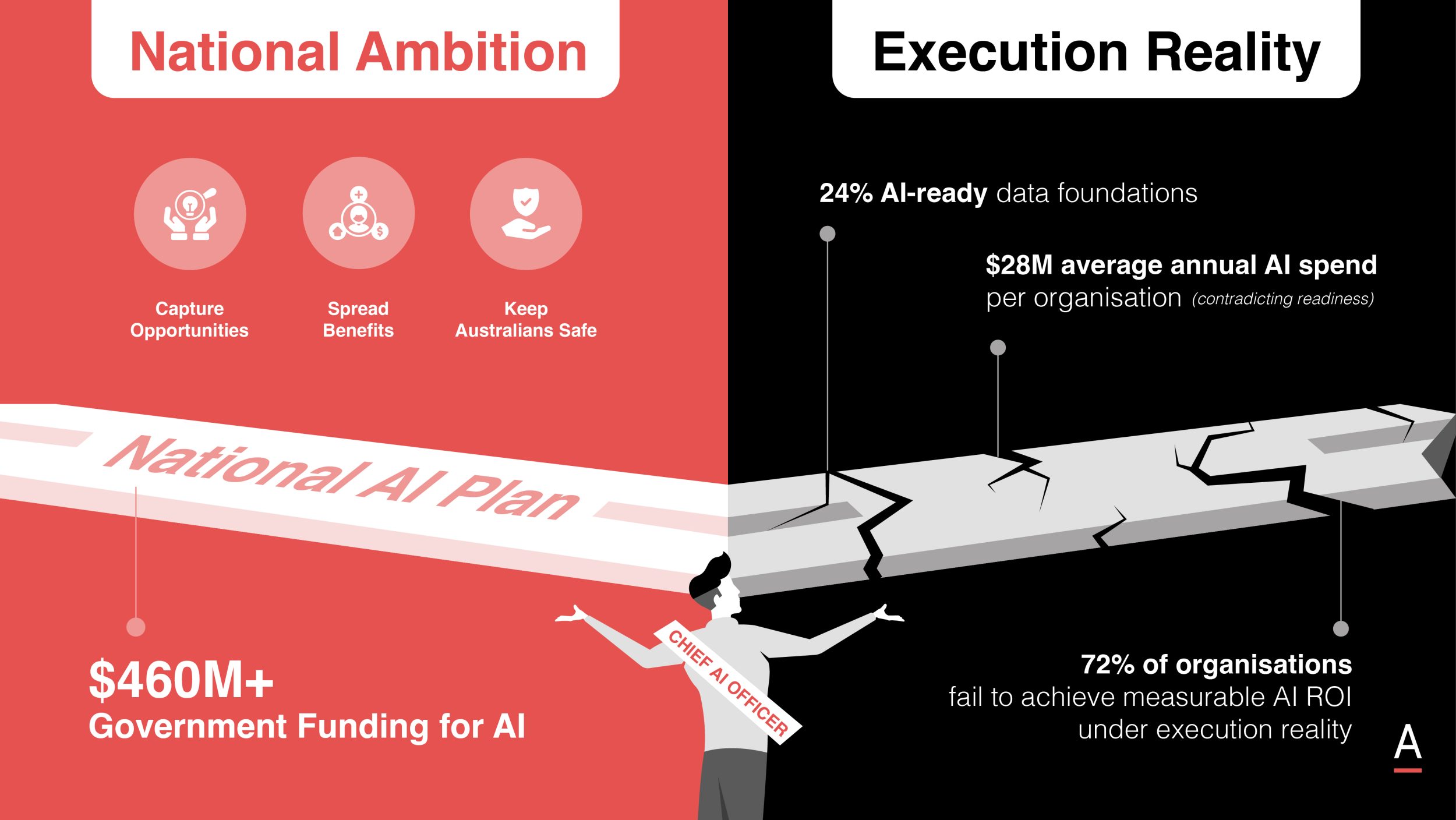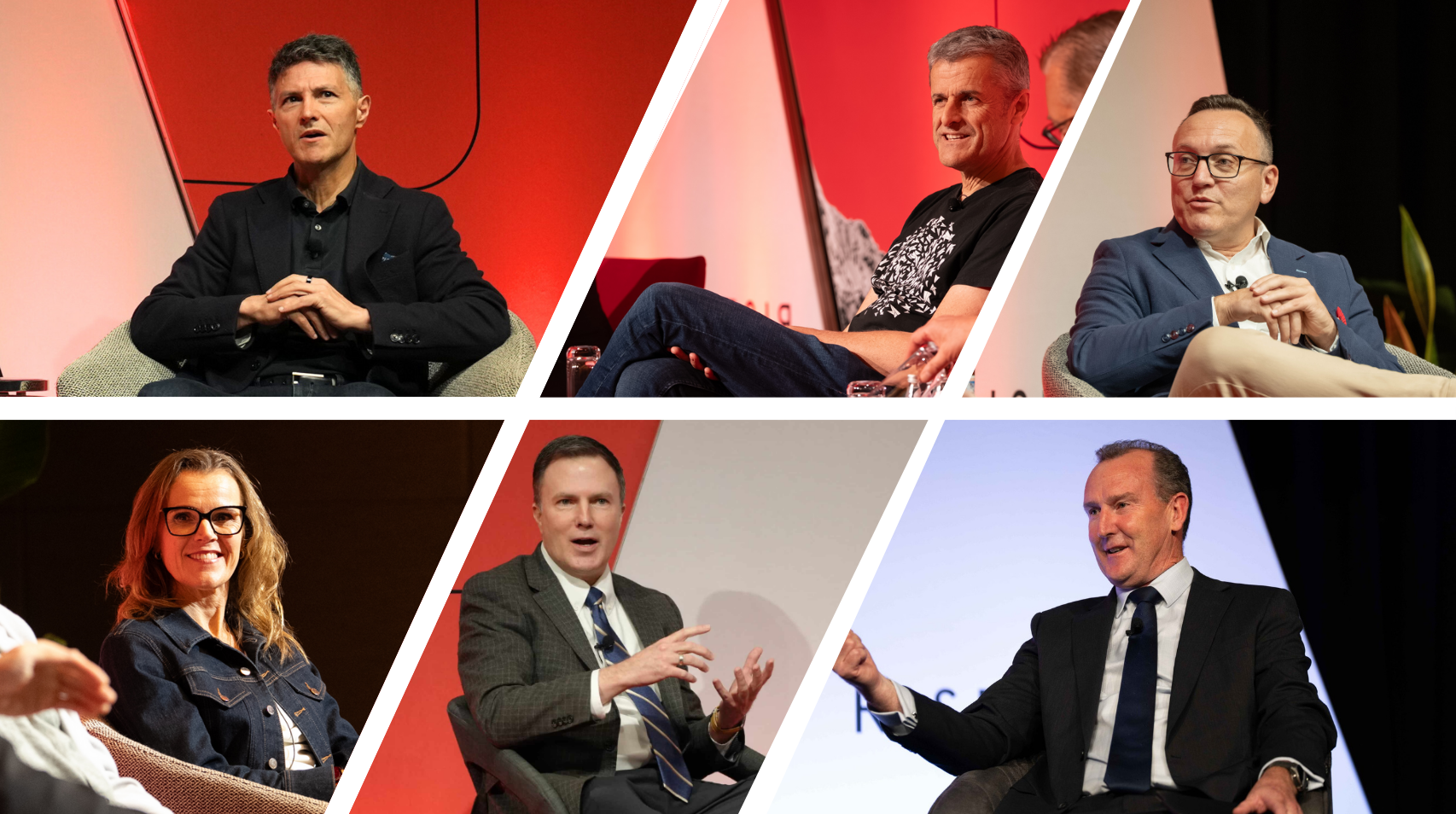ADAPT’s CIO Edge examined the state of AI in Australia and strategies for realising a value-driven AI future.
The recent CIO Edge event gathered over 200 IT leaders from enterprise, government, and mid-market firms, collectively overseeing technology investments that impact 30% of Australia’s GDP and 1.4 million employees.
A central theme was the strategic adoption of artificial intelligence (AI), with insights shared by leaders from organisations such as Coles, Downer, the Department of Defence, SW Accountants & Advisors, RMIT, and McKinsey & Company.
Their collective experiences offer valuable lessons for CIOs navigating the evolving AI landscape.
Establish a strategic framework for AI adoption
Kicking off the event, Jim Berry, CEO and Founder of ADAPT, emphasised that AI is fundamentally altering organisational possibilities.
He advised CIOs to adopt practical, strategic approaches to AI, urging them to lead compliant and responsible AI strategies, manage a digital workforce, and swiftly adapt to emerging capabilities like agentic reasoning.
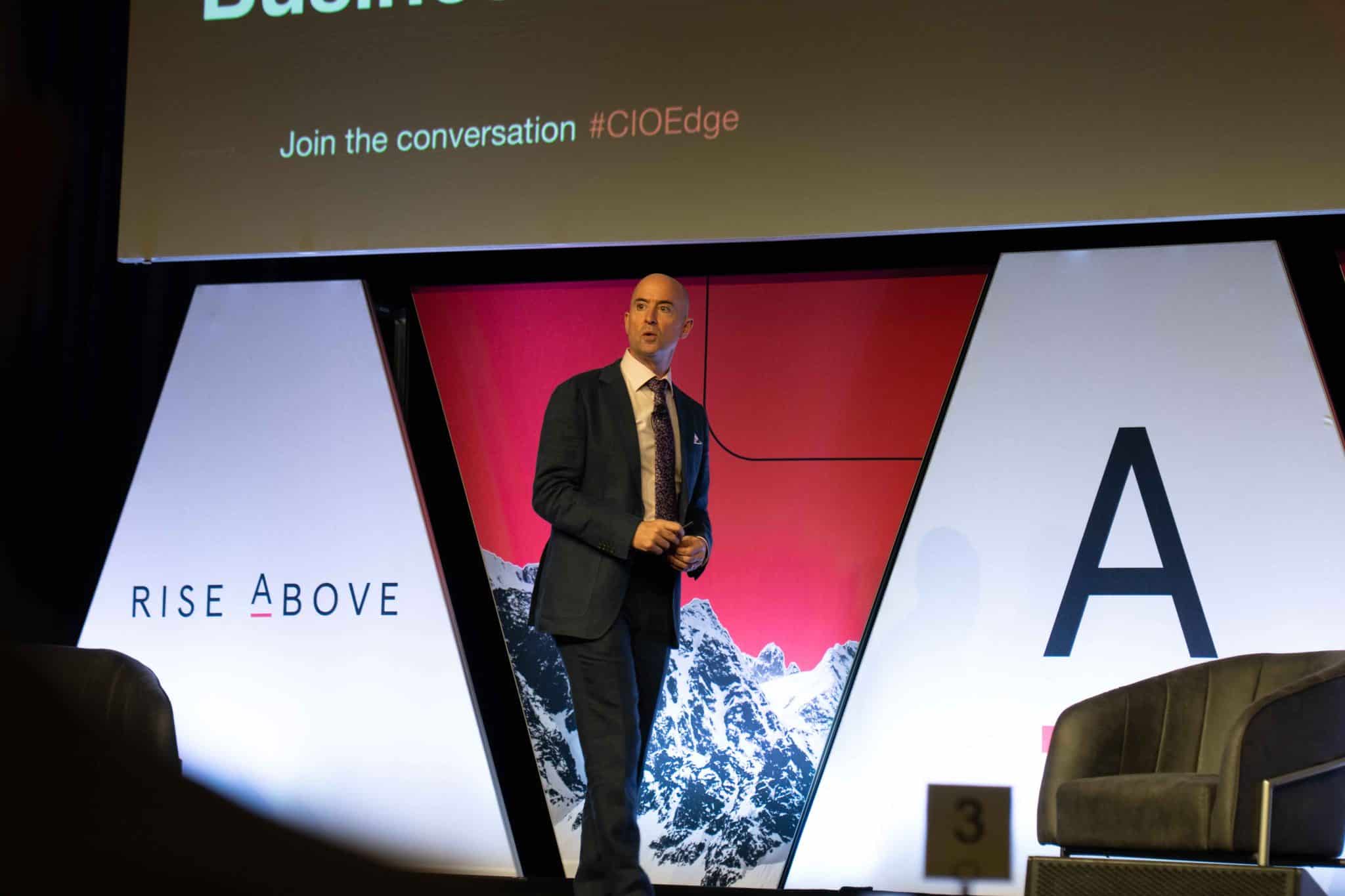
As AI quickly reshapes their roles, CIOs must align initiatives clearly with business goals, underscoring the importance of establishing a strategic framework early.
Meanwhile, Dr Michael G. Kollo, Director of AI at ADAPT, presented research based on data from 200 Australian CIOs, showing that AI has rapidly become a top strategic priority.
“Developing an AI strategy and roadmap” has entered the top five CIO goals for 2025 for the first time, and while only 4% of IT budgets currently go to generative AI, 70% of CIOs plan to increase investment in that area.
Half are also raising their overall AI spend—marking a clear shift in intent.
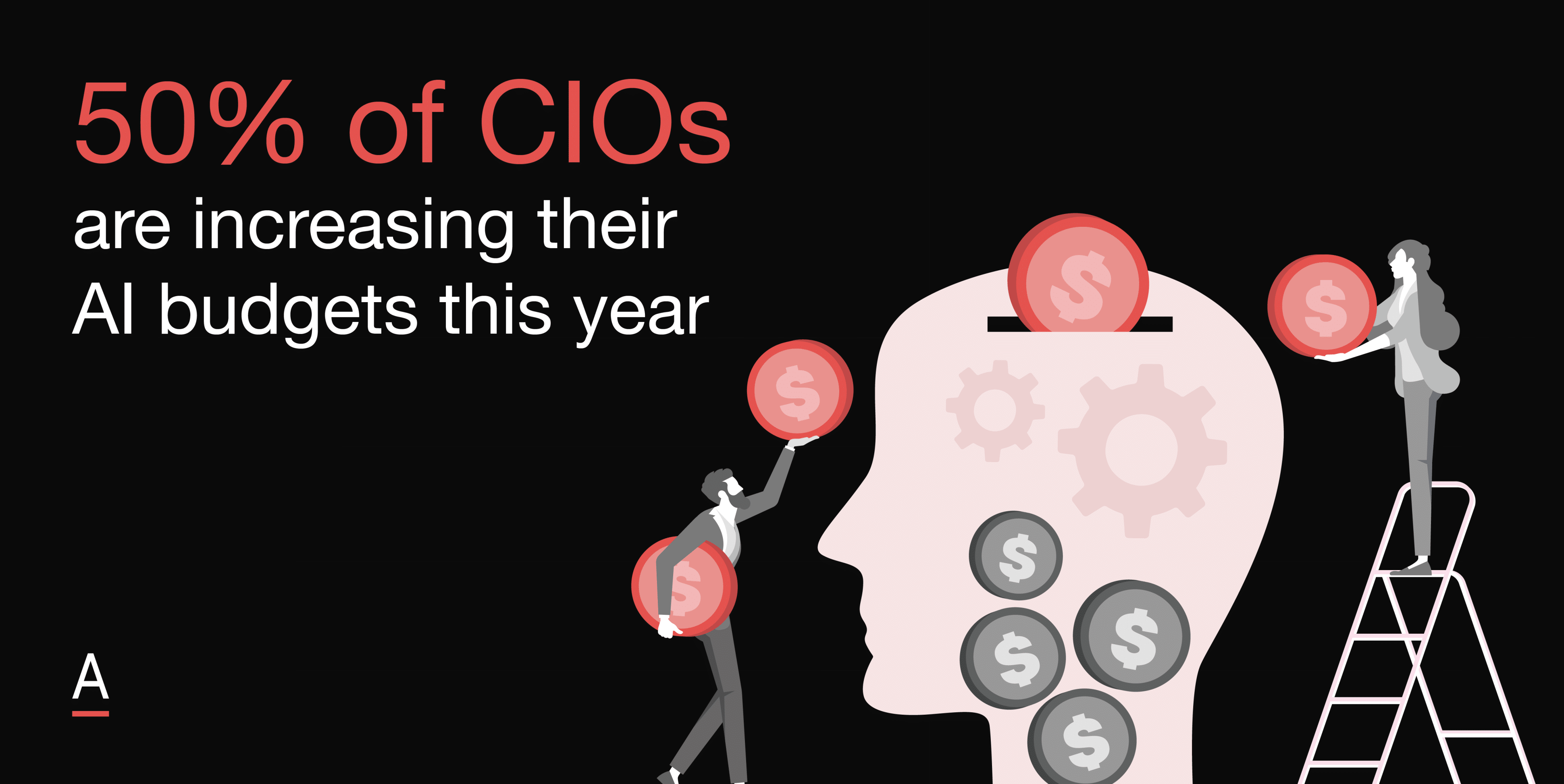
However, this growing enthusiasm isn’t matched by readiness.
Only 40% of organisations have the infrastructure needed to support AI, and just 25% have automated workflows—two of the biggest barriers to adoption.
The most common use case remains employee enablement, such as internal chatbots for knowledge and policy access, while more strategic deployments like market intelligence and pricing decisions are still rare.
When it comes to value, the story gets more complex.
ROI is the top metric CIOs use to assess AI success, but 50% admit they struggle to measure value over time.
![]()
CFOs share this concern—40% believe that deployed technologies are often underused or fail to deliver on promised outcomes.
This misalignment contributes to a trust gap between IT and finance, making it harder to justify future AI investments.
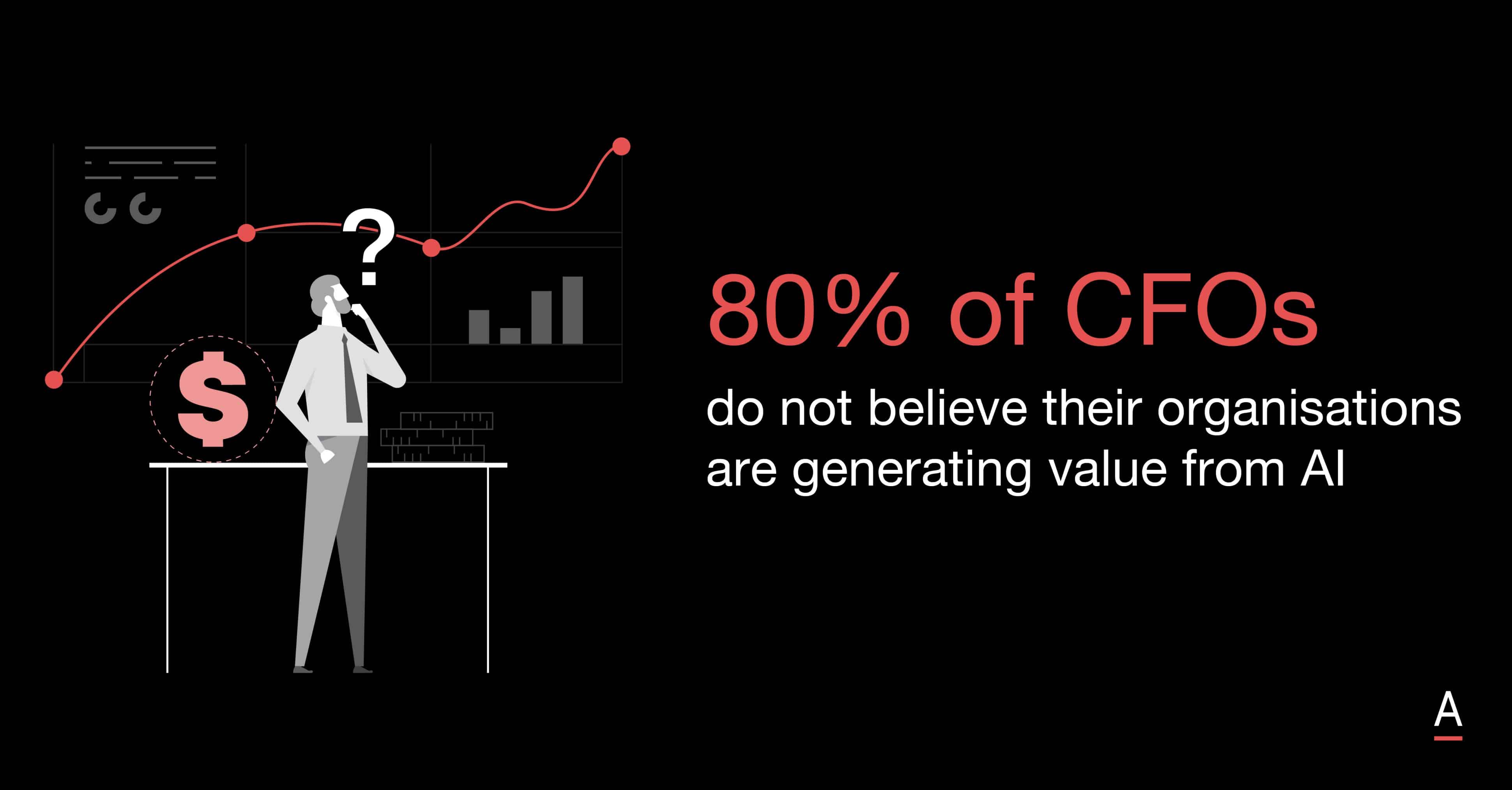
Only 13% of CIOs consider their organisations successful with AI.
According to Dr Kollo, their success isn’t driven by factors like infrastructure modernisation or piloting frequency.
Instead, it comes down to two critical enablers: building environments that support AI platforms and analytics, and using AI explicitly for cost reduction.
Organisations that do both report an 86% success rate—compared to just 9% among those that don’t.
In short, the research reinforces that effective AI adoption depends less on how much is spent and more on how well it is aligned to measurable business outcomes through clear strategy, governance, and deliberate value tracking.
Bringing this framework to life, in an interview at with ADAPT’s Principal Research Analyst Peter Hind, Michael Fugaro, CIO at SW Accountants & Advisors, shared that his firm established a Digital Innovation Group to guide their AI efforts, involving partner leads from across the firm to ensure alignment with business needs.
This group co-created a strategic AI framework focused on clearly defined goals, governance guardrails, education, and ethical use.
Similarly, Nicola Dorling, Group CIO at Downer, emphasised the importance of a structured approach to AI adoption, highlighting the need to clearly define business problems before choosing technology during a CIO Edge panel discussion.
She recommended running targeted use cases early to build trust, ensure alignment with organisational goals, and establish governance to avoid the proliferation of unnecessary tools.

Leverage AI to enhance operational efficiency
John Cox, former CTO at Coles, discussed the practical application of AI to improve operational efficiency.
Coles has developed an “intelligent edge backbone” that deploys machine vision in stores to automate decisions like restocking shelves through next-best-action triggers—a critical efficiency play in a low-margin retail environment.
Additionally, an internal AI bot responds to HR queries for Coles’ 115,000-strong workforce, significantly reducing call centre costs.
John stressed the importance of clean data, compliance, and careful design to avoid unintended harm.
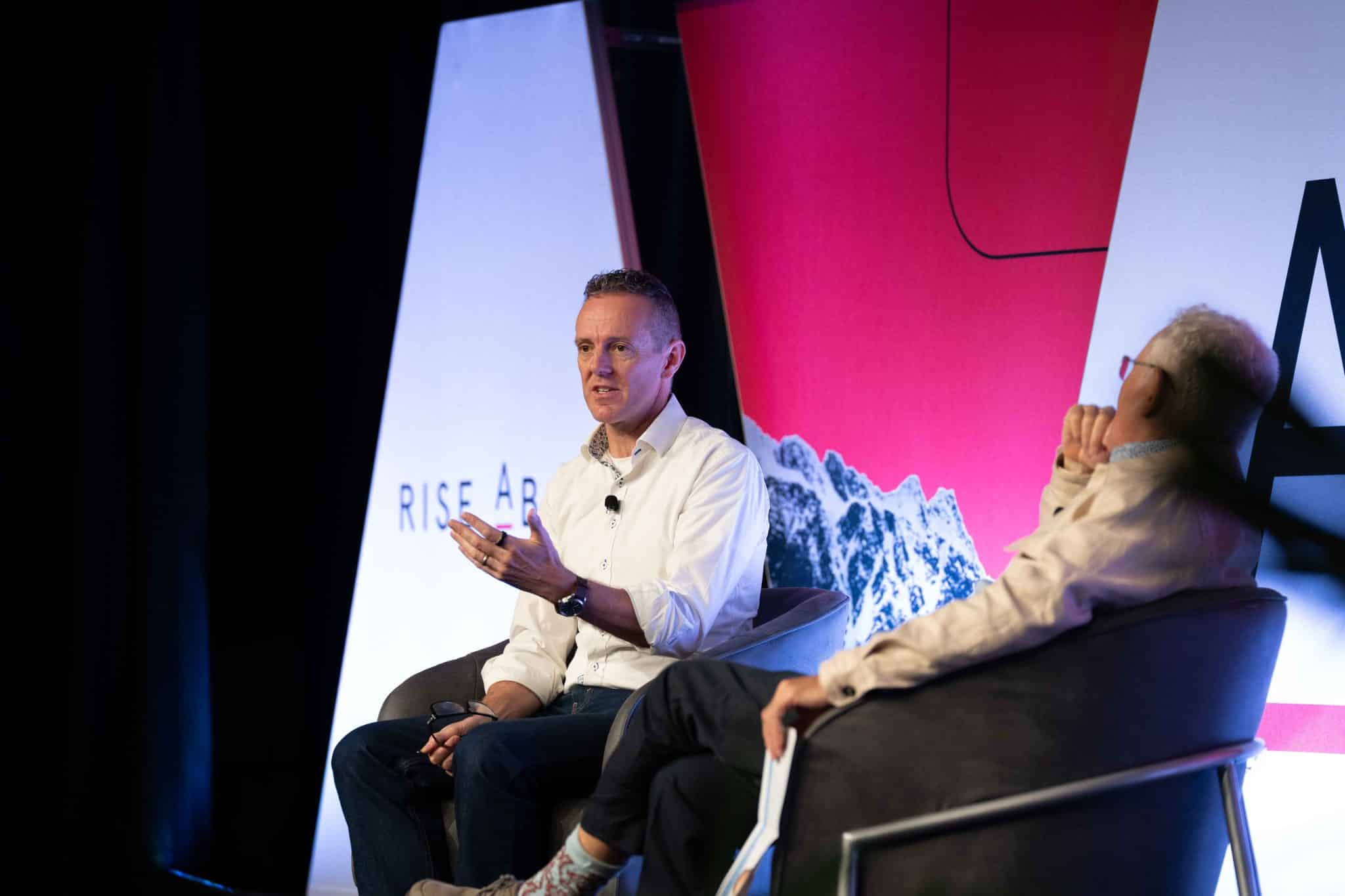
Peter Alexander, CTO at the Department of Defence, stressed that AI and automation are critical to operational effectiveness, especially when applied at the edge—whether on a ship, in a forward base, or in the field.
In the CIO Edge panel, he emphasised that Defence personnel readily embrace simplified, AI-enabled systems that remove friction and enhance mission execution, such as logistics planning or adversary detection.
Peter also discussed the strategic use of multiple hyperscalers, which gives Defence access to differentiated AI capabilities while building resilience and adaptability into their environment.

Prioritise data quality and governance
Dr. Peter Weill, Chairman of MIT’s Center for Information Systems Research (CISR), presented a data-backed framework outlining how organisations can realise bottom-line value from AI.
Based on a global study of 720 companies, his team identified four distinct stages of AI maturity, with the key finding that the first two stages show no measurable bottom-line impact from AI, while stages three and four produce significant financial returns.
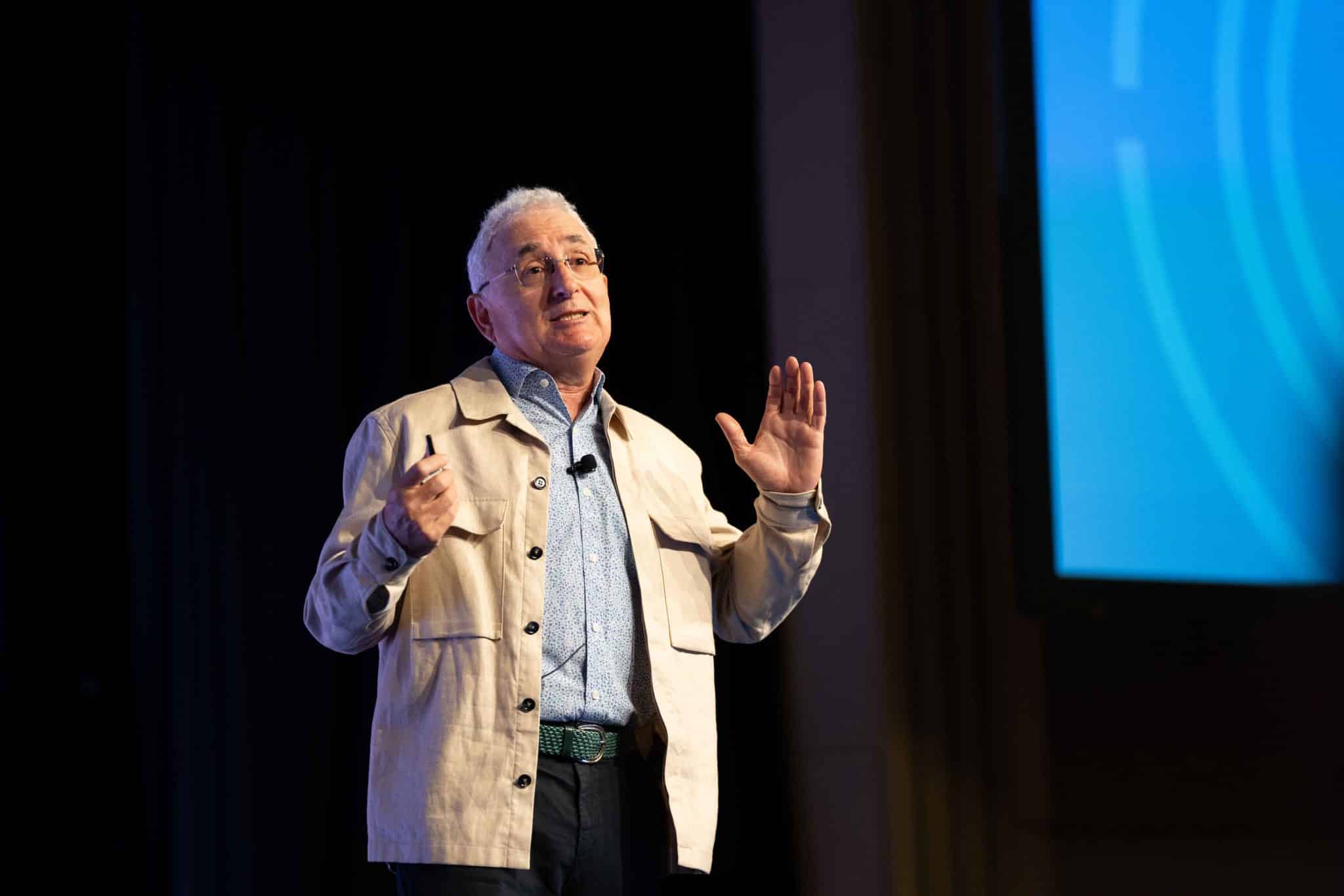
Dr Weill reported that more than 50% of organisations globally are still in stages one and two, where foundational pilots and AI education occur but financial returns remain negative or neutral.
The turning point comes in stage three, where companies industrialise AI by building internal platforms, shifting from one-off pilots to reusable models.
Andrew Cresp, former CIO at Bendigo Bank, brought a practical lens to AI and automation, warning that organisations often waste capacity trying to support legacy systems instead of freeing up space for impactful automation.
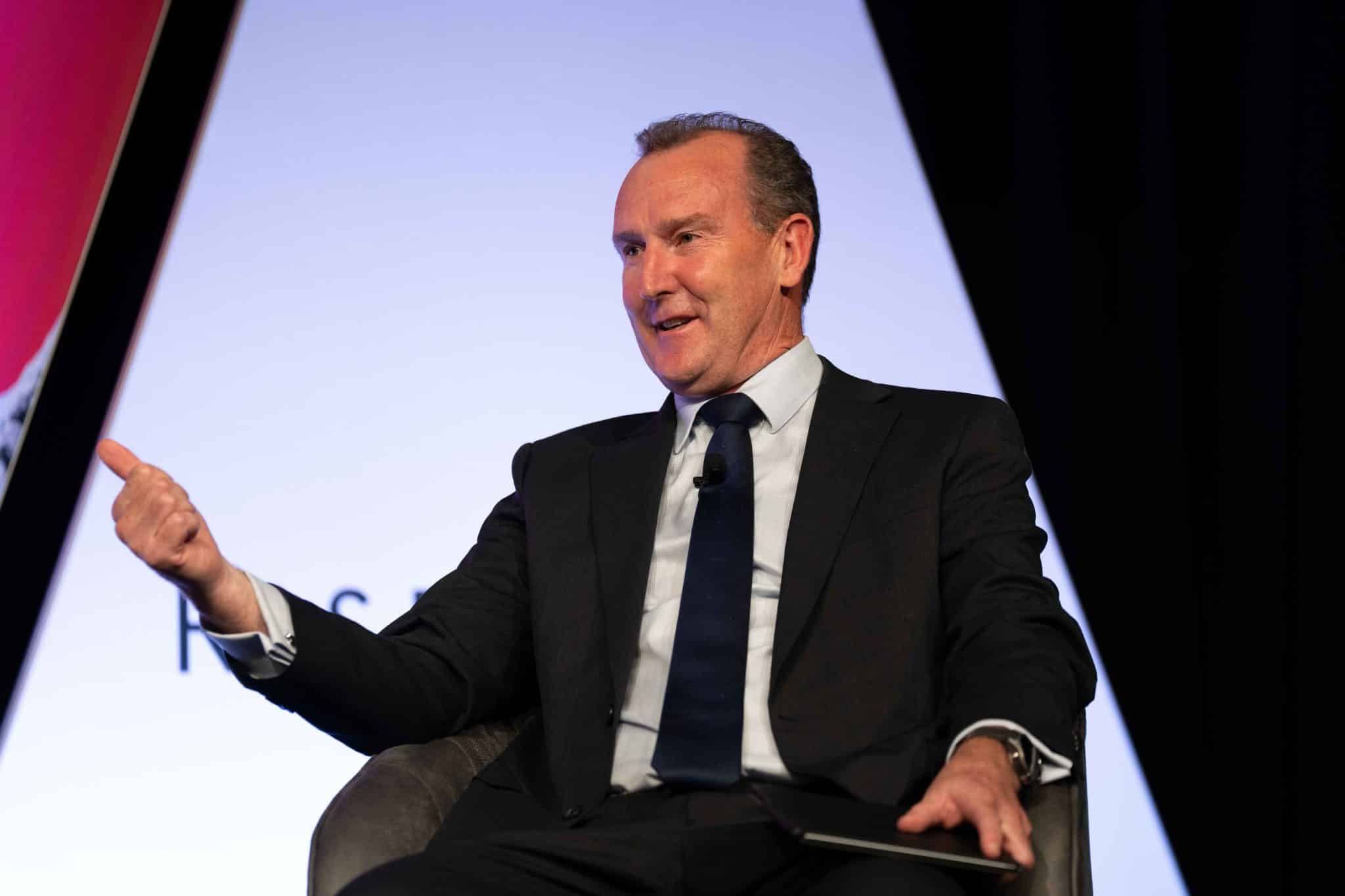
He emphasised that to realise the full potential of AI, systems must be refactored—not just relocated—so they can continuously improve and adapt.
Andrew noted that successful adoption hinges on consistent change delivery, sustained momentum, and mindset: transformation must lead to increased change velocity, not just a temporary uplift.
Focus on workforce upskilling and change management
In her CIO Edge presentation, Melissa Bischoping, Senior Director of Security & Product Design Research at Tanium, highlighted the necessity of automation and AI in combating burnout and scaling the capacity of overburdened engineering teams.
She noted that less than 30% of organisations significantly automate workflows today, warning that the sector is lagging behind.

Michelle advocated for unified, real-time data, thoughtfully curated tools, and automation that targets actual pain points to free teams to innovate and prevent burnout.
Talking to ADAPT’s Gabby Fredkin, Sandy Aitken, Technology Transformation Director at Cleanaway Waste Management, stressed the recurring challenge of a lack of foundational IT and data skills, which limits organisations’ ability to adopt and scale AI effectively.
He observed that many in the workforce are drawn to exciting front-end AI applications without understanding the critical backend components—data quality, system integration, and infrastructure—that make AI effective.
Sandy called for stronger homegrown capability in Australia, building local literacy across ages and roles.
Ensure user adoption and scalability of AI solutions
Alexey Goldov, Partner at McKinsey & Company, addressed the challenges organisations face in scaling AI initiatives.
He noted that while many companies launch AI pilots, a significant number fail to scale due to lack of user adoption. Alexey emphasised the importance of designing AI solutions with reusability in mind, involving modular tech components and standardised implementation steps.
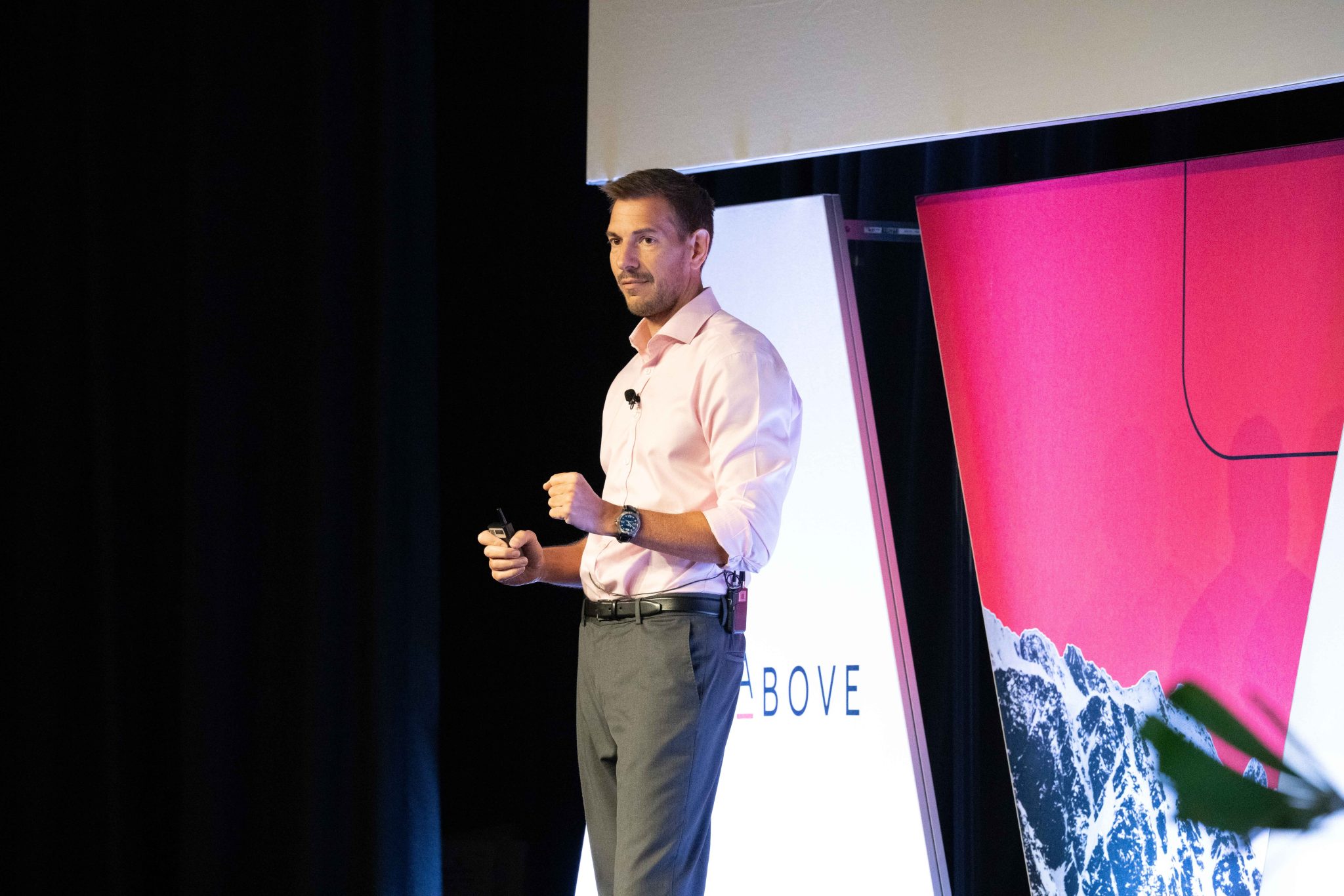
He also highlighted the necessity of tracking value realisation through balanced metrics, including business value KPIs, delivery team health KPIs, and adoption/change metrics.
Additionally, Alexey underscored the need to address risks specific to AI, such as bias and decision opacity, by embedding automated controls and policies.
Develop internal AI capabilities through innovation and collaboration
Sinan Erbay, CIO at RMIT, shared the university’s proactive and collaborative approach to AI adoption.
Rather than restricting AI, RMIT encourages user-led innovation through its secure, internally managed generative AI platform, VAL (Virtual Assisted Learning).

Students actively use VAL for learning support, assignment drafting, and mock interviews, while academic and professional staff utilise it to enhance productivity and improve educational outcomes.
Sinan explained this inclusive, co-designed approach has boosted student engagement, promoted cross-disciplinary collaboration, and supported digital equity by providing advanced AI tools accessible to all students, regardless of socio-economic background.
The insights from CIO Edge underscore that successful AI adoption requires a strategic framework, a focus on operational efficiency, robust data governance, workforce upskilling, effective change management, and an emphasis on user adoption and scalability.
By learning from these leaders’ experiences, CIOs can navigate the complexities of AI integration and drive meaningful business outcomes.




